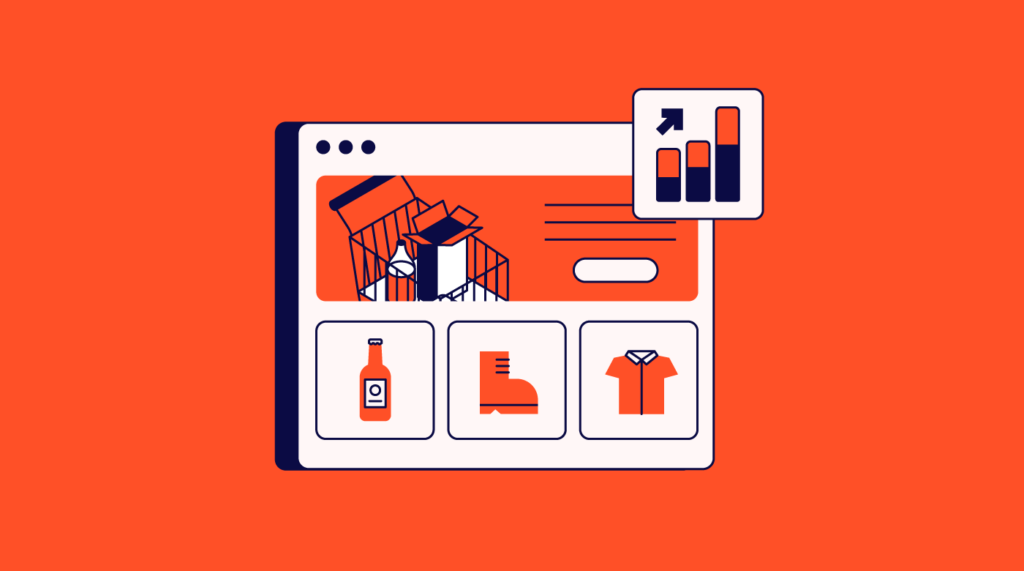It’s the internet’s most familiar and aggravating scenario: You’re browsing and scrolling, hunting down the perfect ensemble for the weekend or researching for a trip abroad, when suddenly, progress grinds to a halt. The page either refuses to load or does so at a glacial pace as your enthusiasm comes to a standstill. Chances are, you’ll either call it quits or start over on a fresh, hopefully more cooperative webpage.
For chief technology officers and decision makers in ecommerce, this problem can be debilitating. Scaling an ecommerce website to handle high volumes of traffic is a complex task involving many technical and strategic considerations. To actively practice the art of ecommerce traffic management, you need to plan carefully to ensure your websites can handle surging internet traffic without sacrificing performance, security, or the customer’s journey.
Why Does A Traffic Surge Crash My Website?
Experiencing a website crash due to high traffic is not unusual; it can happen for many different reasons. Even websites specializing in ecommerce traffic management are subject to the capricious laws of scalability.
Some of the problems that can cause a website crash include:
A lack of infrastructure scalability
Website infrastructure must be able to adapt to traffic fluctuations. While there are cloud-based services that can help you adapt to these surges, ensuring ecommerce scalability and performance without incurring excessive costs can be complex.
Incomplete disaster recovery
Crises happen, and maintaining a robust disaster recovery plan can be challenging. You’ll need backup servers, databases, and infrastructure in place to minimize downtime during failures.
Poor load balancing
Load balancing is crucial in ensuring an ecommerce website can handle surging internet traffic effectively. Properly implemented load balancers will evenly distribute incoming traffic across multiple servers or instances. But beware: Misconfigurations can lead to uneven loads or service disruptions.
Not using caching mechanisms
Implementing server-side caching can reduce the load on the web server and database and significantly enhance performance during traffic spikes. Overcaching or undercaching can impact the user experience.
Murky security measures
Security threats are one of the biggest risks to ecommerce traffic management. Maintaining strong security while scaling, handling sensitive customer data, and protecting against evolving threats requires constant vigilance and regular updates.
Content delivery obstacles
Optimizing content delivery across different geographic regions can be challenging. You will need ways to offload static content to a content delivery network to reduce server load and improve user load times.
Overwhelmed monitoring tools
Monitoring and analytics are vital to website scalability, but configuring and maintaining monitoring tools can be complex. Overwhelming amounts of data can lead to information overload if not properly managed and analyzed.
Mismatched payment processing
Handling large volumes of traffic as an ecommerce business requires payment gateways that can cope with high transaction volumes. Often, processing systems are not adequately scaled alongside the website, and downtime or delays result.
Addressing these challenges will require expertise, resources, and time. Still, if you can prioritize scalability, you can get ahead of problems or stop them from affecting the customer’s journey.
How to Scale Ecommerce Websites In A World Of Surging Traffic
If you can adopt these server optimization techniques and best practices for scaling up your websites, your website will react much better to rapid growth. Ultimately, the goal should be to maximize the user’s experience within your site so that they can seamlessly and excitedly take action.
1. Practice rigorous scalability planning
Planning is fundamental in all areas of your website. To ensure scalability, you must develop a clear and adaptable scalability plan that anticipates traffic spikes and growth. This means that infrastructure, architecture, and technology choices can all be easily scaled to accommodate increased demand without sacrificing performance. Resource planning will be crucial; you should develop a resource allocation system, adjusting the server’s capacity — adding more CPU or storage, for example — as the needs of the business change. In line with this, understanding and scaling WordPress for high traffic is crucial, especially if the website is built on this platform. (WordPress powers a significant percentage of ecommerce sites.)
2. Optimize your content delivery
Leveraging CDNs can help you deliver content across the globe without disrupting user experience. That’s because a CDN can protect websites from large surges in traffic by efficiently providing static content, reducing latency, and enhancing page load times. In addition, implementing a CDN could help you make your website safer. Mitigate denial-of-service attacks and bolster security updates to improve the overall user experience.
3. Embrace microservices
Your server optimization efforts should include caching, database tuning, content compression, and other methods that take unwieldy processes and turn them into manageable chunks for your server. Embracing microservices architecture and serverless computing means creating modular, lightweight services that can scale independently. This approach allows for more efficient resource utilization and improved fault tolerance. A microservices mindset also makes security more straightforward to manage and monitor.
4. Apply continuous performance testing
Evaluation and monitoring are the final pieces of the scalability puzzle. So many ecommerce website traffic tips fall back on the need to monitor. Track how strategies perform and implement analytics tools to peer into user behavior. Real-time monitoring and data-driven decision-making are essential for proactive optimization. They allow you to anticipate bottlenecks and issues under high loads. You can put your strategies to the test by regularly checking your website’s scalability, load handling, and failover mechanisms to ensure they meet increased traffic demands.
Conclusion
While the internet may be a challenging, overwhelming place, it is possible to thrive in surging traffic, capitalize on growth opportunities, and simultaneously deliver an exceptional user experience. Follow these four strategies to make this happen despite the internet’s shifting whims. Put scalability planning at the heart of your business, embrace optimization and modularity, and build monitoring tools into your stack.
Don’t forget to subscribe to the Ecom Manager newsletter for more industry insights from experts in the field of online commerce.


